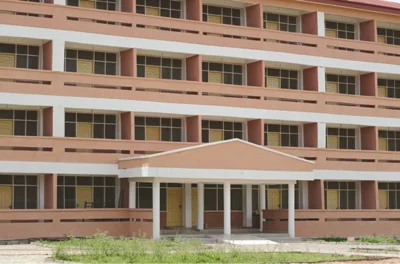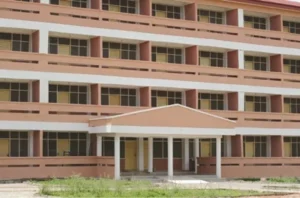
Bolgatanga Technical University is currently experiencing a significant shortage of dedicated office space for its academic staff, a challenge largely caused by ongoing funding limitations and inconsistent government support, according to Vice-Chancellor Professor Samuel Erasmus Alnaa.
The university’s efforts to expand its infrastructure—vital for effective teaching and staff productivity—have been hindered by long-term financial constraints. Professor Alnaa pointed out that irregular allocations from the Ghana Education Trust Fund (GETFund) have contributed to this situation, with resources often redirected away from technical universities.
Although the institution once received US$3.3 million aimed at improving technical workshops and laboratories, funding for capital projects has decreased sharply in recent years. Internally generated revenue has also fallen short, primarily due to historically low student enrolment. However, the 2024/2025 academic year saw a positive shift, with over 1,000 new admissions boosting total enrollment to 2,894 students.
Despite this growth, the university must focus its limited resources on daily operations rather than new building projects. “Investing our scarce funds in office construction could jeopardize essential day-to-day activities,” Professor Alnaa explained.
As a result, plans to develop dedicated academic offices have been put on hold. Instead, BTU will prioritize building a multi-storey block this academic year, combining 24 classrooms with 12 shared office spaces, to make efficient use of limited land.
The university remains committed to providing practical learning tools and consumables, which are critical for technical education. Management continues to navigate these infrastructure challenges while striving for sustainable growth to meet the rising demand for technical training in northern Ghana.
FAQs: Bolgatanga Technical University Infrastructure and Office Space
-
Why is Bolgatanga Technical University facing a shortage of office space for academic staff?
The shortage is due to long-term funding constraints and inconsistent government support, particularly irregular allocations from the Ghana Education Trust Fund (GETFund). -
Has Bolgatanga Technical University received funding for infrastructure development in recent years?
While the university previously received US$3.3 million for technical workshops and laboratories, capital development funding has significantly declined in recent years. -
How has student enrollment impacted the university’s funding and infrastructure plans?
Historically low enrollment limited internally generated funds, but the 2024/2025 academic year saw over 1,000 new students admitted, increasing total enrollment to 2,894, which may help future funding opportunities. -
Are there plans to build new office spaces for academic staff?
Plans for dedicated academic offices are currently suspended due to financial limitations. However, the university plans to construct a combined multi-storey block with classrooms and shared office spaces within the year. -
Why hasn’t the university prioritized office construction despite the shortage?
The university prioritizes daily operational expenses over new construction because investing scarce funds in buildings could compromise essential day-to-day activities. -
What steps is the university taking to improve infrastructure with limited resources?
BTU will build a 24-unit classroom block and 12-unit shared office space using internally generated funds, focusing on efficient land use through multi-storey designs. -
How is Bolgatanga Technical University ensuring quality technical education despite infrastructure challenges?
The university emphasizes providing access to practical tools and consumables, which are essential for effective technical training. -
What is the university’s outlook on managing infrastructure challenges going forward?
Management remains committed to sustainable development, balancing infrastructure needs with rising demand for technical education in the northern regions.





